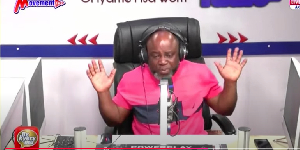The current crises within Ghana’s banking sector has left us all perplexed; with many unanswered questions.
On one hand, we are being asked not to blame the current Governor of BoG since he is only implementing recommendations that he received when he took over from the previous Governor. So that means the previous administration’s Governor had set in motion a plan of action to be implemented based on findings from BoG’s investigations.
Yet, on the other hand, we are being told that the previous regime is to blame for this current crises.
The real questions are: - when were these investigation carried out? - what were the findings - when were the actions to remedy these findings meant to be implemented? - why had these actions not been implemented?
Let’s backtrack a bit to understand some of the histories behind it.
From the reports, it seems that a provisional license was given to these new banks and later a full license given.
Undoubtedly, there were terms spelled out in the provisional license which would have had to be achieved before a full operational license would be given. Were these requirements met?
The Banking Supervision Department (BSD) is receiving a lot of flak and it appears that it is not performing its primary function of audit, supervision, and oversight of banking and financial institutions properly. This may be due to lack of credit, treasury, and operations risk management expertise in practical commercial banking or due to recommendations made by BSD not being implemented by the BoG(
The real question here, in my opinion, is how independent is the BoG from the Ministry of Finance (MoF)? And, why could the BoG Governor not put pressure on MoF to make good their indebtedness to many of the clients of these banks such as the Bulk Distribution Companies (BDCs), the Road Contractors, and other entities in the power sector etc?
This was a ticking time bomb waiting to explode!
Although Government holds less than 12% of the loans through various SoEs, the total loans issued by these banks that have some sort of Government exposure is over 30% ie where Government is the credit base - meaning that Government is the underlying creditor who ultimately, directly or indirectly, needs to pay these institutions that their clients had contracts with so that these clients can make payments to these banks.
And, the Non-Performing Loans (NPLs) of total loans where the government is the credit base - directly or indirectly - is close to 75%.
This means that most banks will not have 75% of their NPLs if Government paid their clients for works contracted.
So, how did the government get away with this???
Simple! Collusion between MoF and BoG to not reflect the true Government’s total debt exposure.
All Government needed to do was borrow to pay what they owed to their counterparties - the BDCs, the Road Contractors, and the Power Sector Supply Chain - so these companies could make whole outstanding indebtedness. But because they want to show certain ratios to appease the likes of the World Bank and IMF, and also to manage other derivative indices and ratios they did not borrow to pay off these debts.
It is important to note that Government in most cases refuses to pay the banks clients, whom they owed, the interest rates charged by the commercial banks (another bully tactic) leaving most of these BDCs, contractors and power sector value chain institutions such as ECG, VRA, IPPs GRIDCO at the mercy of these banks. Thus causing major defaults and bankruptcies of these companies and eventually these financial institutions.
And yes, the Power sector is bankrupt as most of the institutions have defaulted in paying back the loans or interest on a timely basis. BoG is again silent on this
Most of them even carry evergreen overdrafts that are never extinguished, and some have 90-day Letter of Credits (LCs) they have not been able to pay down for over a year (and more); these institutions have no excess cash flow currently, or in the foreseeable future, to make repayments of these loans from.
Government will need to recapitalise most of these Government owned institutions (SECs). And most of the private institutions will also need recapitalisation from their shareholders which will mean that they will have to inject capital themselves or raise money from the capital markets or from new investors.
Question is who is going to invest new funds in an entity that does not show any positive cash flow and rather shows losses and negative operating margin (EBIT) or negative operating cash flow (EBITDA)?
This raises the issue of the Governance of BoG and more directly into the composition of the Board of BoG.
Just like commercial banks, the composition of this Board leaves a lot to be desired; BoG supervises all banks - banking in Ghana is mainly commercial banking and not investment banking, with Investment banks products being supervised by the SEC.
A look at the Boards of BoG will reveal very little banking experience and definitely nearly zero commercial banking expertise; this could be the core reason why BoG has been lax in dealing with the recommendations of its main supervisory body - the BSD.
A real case study is Capital Bank and Beige Bank.
Capital Bank was under-capitalised from the onset.
Beige Bank - which was a Savings & Loans institution - was given a license recently around late 2017 only for it to be revoked in less than a year.
Opinions of Wednesday, 29 May 2019
Columnist: Alex Mould



















